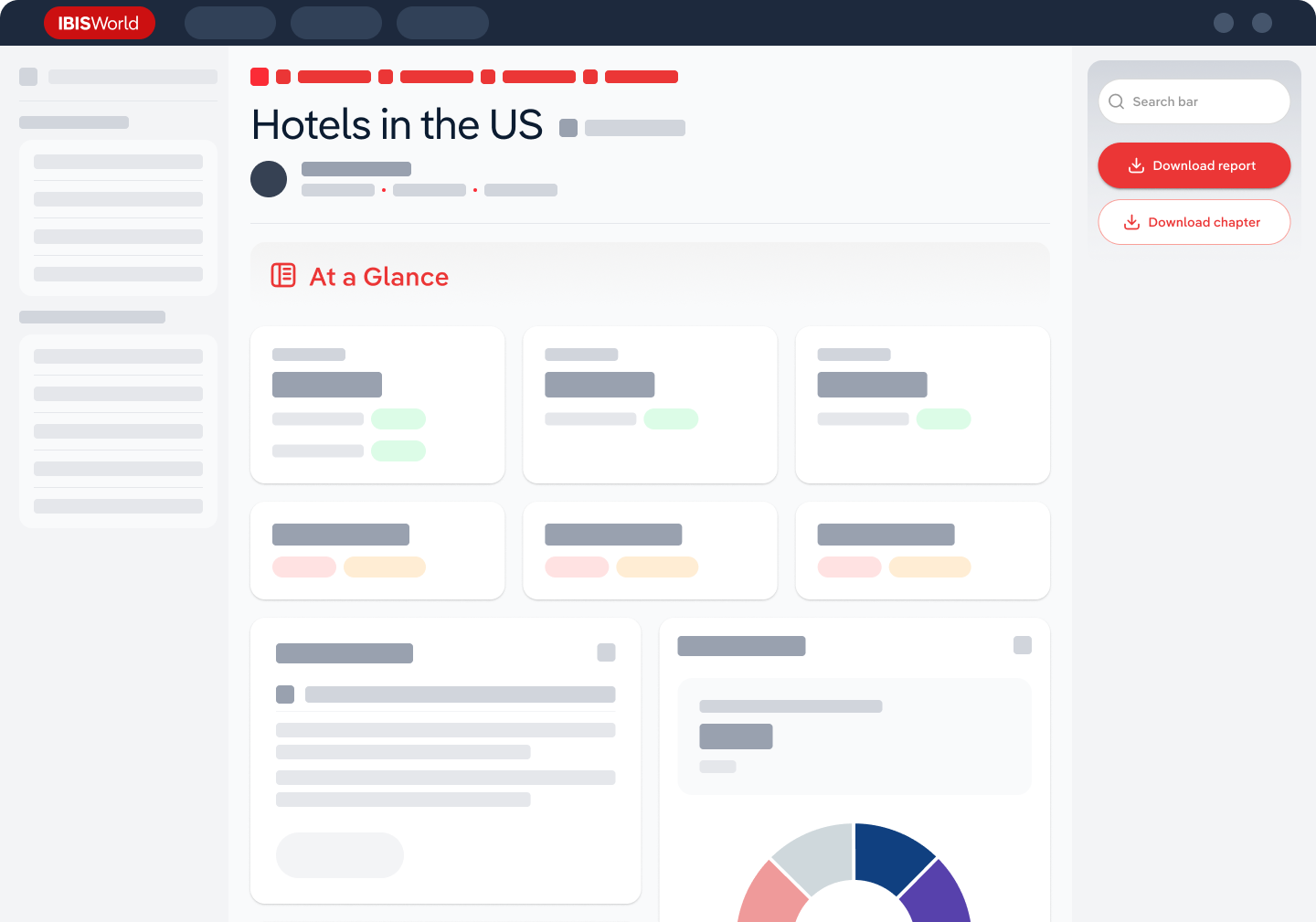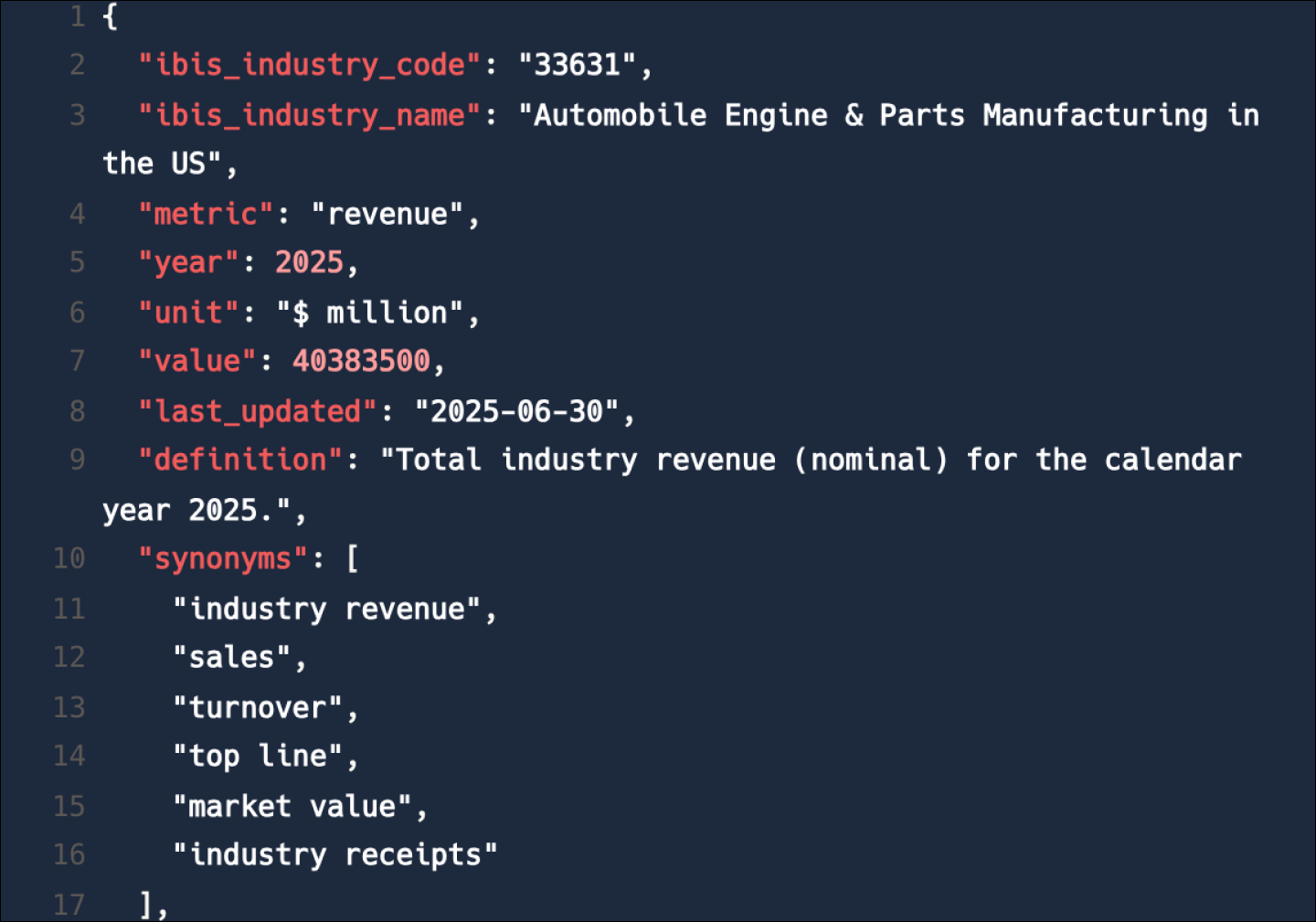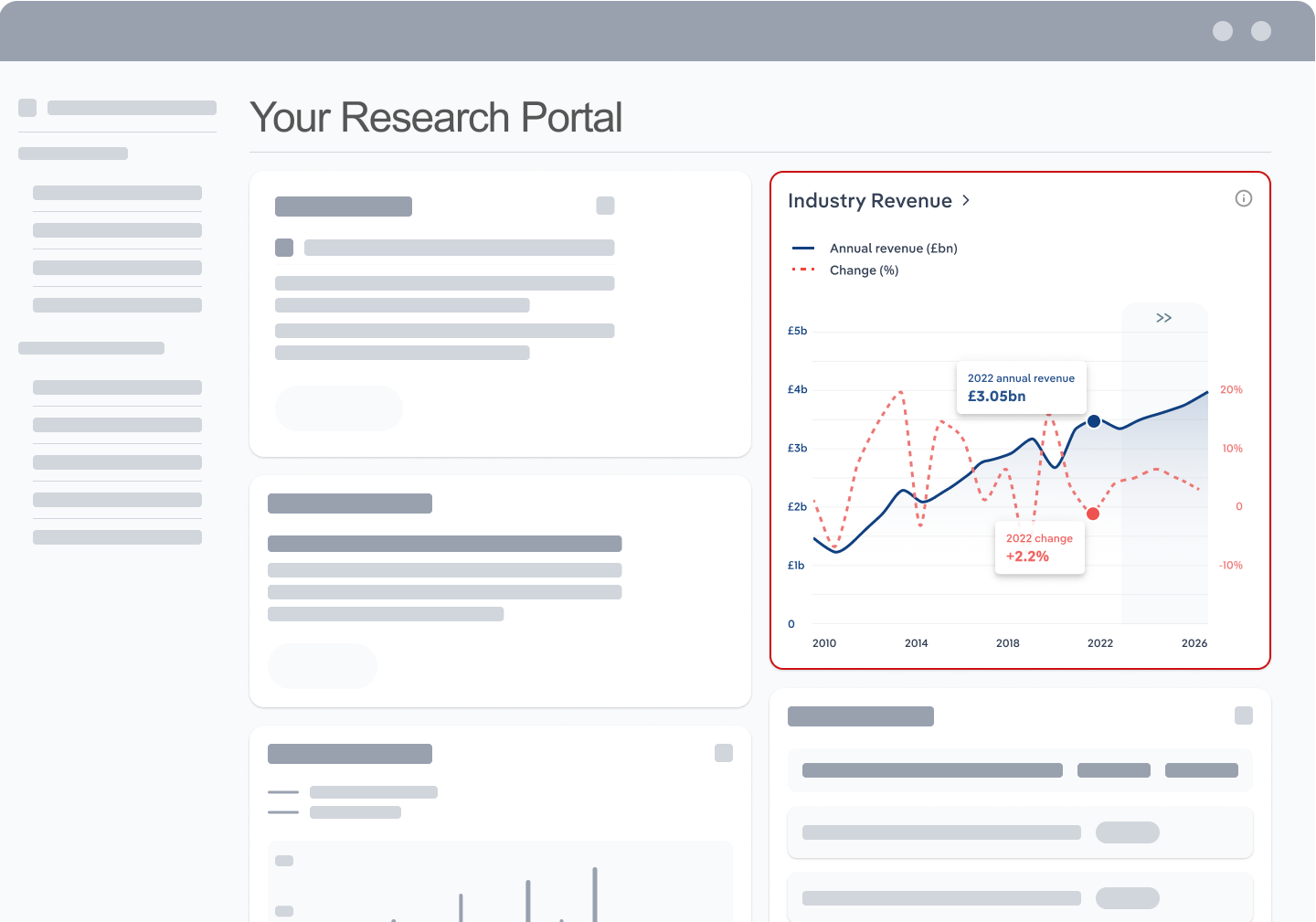Industry Statistics and Trends
Market size and recent performance (2015-2030)
Industry revenue has grown at a CAGR of 14.5 % over the past five years, to reach an estimated €115.5bn in 2025.
Trends and Insights
The declining production volume in Germany is leading to a high level of dependence on international gas imports
- For decades, Germany has been experiencing a decline in the amount of natural gas produced in the country. This is primarily due to the depletion of tapped gas reservoirs, the lack of development of new reservoirs and regulatory restrictions.
- Additional trends and insights available with purchase
Industry outlook (2025-2030)
Market size is projected to decline over the next five years.
Trends and Insights
The construction of liquefied natural gas terminals in northern Germany is intended to increase security of supply
- Although liquefied natural gas (LNG) has long been more expensive than natural gas transported via pipelines due to its complex liquefaction and transport process by ship, demand has grown rapidly in recent years as a result of the avoidance of political dependencies.
Biggest companies in the Gas Manufacturing & Distribution in Germany
| Company | Market Share (%)
2025 | Revenue (€m)
2025 |
|---|---|---|
Thüga Holding GmbH & Co. KGaA | 19,073.1 | |
E.on SE | 9,488.2 | |
RWE AG | 6,774.5 |
To view the market share and analysis for all 5 top companies in this industry, view purchase options.
Products & Services Segmentation
Industry revenue is measured across several distinct product and services lines, including Natural gas and petroleum gas, Furnace and converter gas and Coking plant, town and mine gas. Natural gas and petroleum gas is the largest segment of the Gas Manufacturing & Distribution in Germany.
Trends and Insights
Falling trading prices are likely to reduce sales generated with natural gas and petroleum gas
- Natural gas is a combustible gas that consists mainly of methane and is extracted by drilling. Crude oil gas is a by-product of oil drilling.
- More insights available in the full report
Table of Contents
About this industry
Industry definition
This industry is concerned with the production of gas for supply purposes and the distribution of natural or synthetic gas to the consumer via pipelines. The industry participants are suppliers or brokers who broker the sale of gas via gas distribution networks operated by third parties. However, the independent operation of gas transmission systems is not part of the industry.
What's included in this industry?
Products and services covered in the Gas Manufacturing & Distribution industry in Germany include Natural gas and petroleum gas, Furnace and converter gas and Coking plant, town and mine gas.Companies
Companies covered in the Gas Manufacturing & Distribution industry in Germany include Thüga Holding GmbH & Co. KGaA, E.on SE and RWE AG.Purchase this report to view all 5 major companies in this industry.
Related Terms
Related terms covered in the Gas Manufacturing & Distribution industry in Germany include primary energy, final energy consumption, haber-bosch process and smartgrid.Industry Code
WZ 35.2 - Gas Manufacturing & Distribution in Germany
Performance
Get an indication of the industry's health through historical, current and forward-looking trends in the performance indicators that make or break businesses.
Analyst insights
In Germany, only negligible quantities of natural gas can now be produced due to declining natural gas reserves and increasingly difficult production conditions. The industry...
In this chapter (4)
- Current Performance
- Outlook
- Volatility
- Life Cycle
Key metrics
- Annual Revenue, Recent Growth, Forecast, Revenue Volatility
- Number of Employees, Recent Growth, Forecast, Employees per Business, Revenue per Employee
- Number of Businesses, Recent Growth, Forecast, Employees per Business, Revenue per Business
- Total Profit, Profit Margin, Profit per Business
Charts
- Revenue, including historical (2015-2024) and forecast (2025-2030)
- Employees, including historical (2015-2024) and forecast (2025-2030)
- Businesses, including historical (2015-2024) and forecast (2025-2030)
- Profit, including historical (2015-2025)
- Industry Volatility vs. Revenue Growth
- Industry Life Cycle
Detailed analysis
- Trends in supply, demand and current events that are driving current industry performance
- Expected trends, economic factors and ongoing events that drive the industry's outlook
- Key success factors for businesses to overcome volatility
- How contribution to GDP, industry saturation, innovation, consolidation, and technology and systems influence the industry's life cycle phase.
Products and Markets
Learn about an industry's products and services, markets and trends in international trade.
Analyst insight
The demand for blast furnace and converter gas has risen in the last five years. The reason for this is that these blast furnace gases can replace natural gas.
In this chapter
- Products & Services
- Major Markets
Key metrics
- Largest market segment and value in 2025
- Product innovation level
Charts
- Products & services segmentation in 2025
- Major market segmentation in 2025
Detailed analysis
- Trends impacting the recent performance of the industry's various segments
- Innovations in the industry's product or service offering, specialization or delivery method
- Key factors that successful businesses consider in their offerings
- Buying segments and key trends influencing demand for industry products and services
Geographic Breakdown
Discover where business activity is most concentrated in an industry and the factors driving these trends to find opportunities and conduct regional benchmarking.
Analyst insights
The S&H region has the second-highest number of companies in this sector. This is due to its geographical proximity to the important industrialised countries of the Czech Rep...
In this chapter (1)
- Business Locations
Charts
- Share of revenue, establishment, wages and employment in each region
- Share of population compared to establishments in each region in 2025
Tables
- Number and share of establishments in each region in 2025
- Number and share of revenue each region accounts for in 2025
- Number and share of wages each region accounts for in 2025
- Number and share of employees in each region in 2025
Detailed analysis
- Geographic spread of the industry across Europe, and trends associated with changes in the business landscape
- Key success factors for businesses to use location to their advantage
Competitive Forces
Get data and insights on what's driving competition in an industry and the challenges industry operators and new entrants may face, with analysis built around Porter's Five Forces framework.
Analyst insights
The industry players have difficulty differentiating themselves from one another. The fact that all industry players offer a homogeneous product means that they mainly compet...
In this chapter (4)
- Concentration
- Barriers to Entry
- Substitutes
- Buyer & Supplier Analysis
Key metrics
- Industry concentration level
- Industry competition level and trend
- Barriers to entry level and trend
- Substitutes level and trend
- Buyer power level and trend
- Supplier power level and trend
Charts
- Market share concentration among the top 4 suppliers from 2020-2025
- Supply chain including upstream supplying industries and downstream buying industries, flow chart
Detailed analysis
- Factors impacting the industry’s level of concentration, such as business distribution, new entrants, or merger and acquisition activity.
- Key success factors for businesses to manage the competitive environment of the industry.
- Challenges that potential industry entrants face such as legal, start-up costs, differentiation, labor/capital intensity and capital expenses.
- Key success factors for potential entrants to overcome barriers to entry.
- Competitive threats from potential substitutes for the industry’s own products and services.
- Key success factors for how successful businesses can compete with substitutes.
- Advantages that buyers have to keep favorable purchasing conditions.
- Advantages that suppliers have to maintain favorable selling conditions.
- Key success factors for how businesses can navigate buyer and supplier power.
Companies
Learn about the performance of the top companies in the industry.
Analyst insights
E.on is conducting various research projects in the field of network efficiency. With the help of the SmartSim method, for example, the calorific value of the gas can be prec...
In this chapter
- Market Share Concentration
- Companies
- Company Spotlights
Charts
- Industry market share by company in 2021 through 2025
- Major companies in the industry, including market share, revenue, profit and profit margin in 2025
- Overview of Thüga Holding GmbH & Co. KGaA's performance by revenue, market share and profit margin from 2019 through 2025
- Overview of E.on SE's performance by revenue, market share and profit margin from 2019 through 2025
- Overview of RWE AG's performance by revenue, market share and profit margin from 2019 through 2025
- Overview of revenue, market share and profit margin trend for 2 additional companies
Detailed analysis
- Description and key data for Thüga Holding GmbH & Co. KGaA, and factors influencing its performance in the industry
- Description and key data for E.on SE, and factors influencing its performance in the industry
- Description and key data for RWE AG, and factors influencing its performance in the industry
- Description, key data and performance trends for 2 additional companies
External Environment
Understand the demographic, economic and regulatory factors that shape how businesses in an industry perform.
Analyst insights
The Act for the Maintenance, Modernisation and Expansion of Combined Heat and Power Generation (KWKG) promotes the expansion of CHP plants as an energy-efficient application f...
In this chapter
- External Drivers
- Regulation & Policy
- Assistance
Key metrics
- Regulation & policy level and trend
- Assistance level and trend
Charts
- Regulation & Policy historical data and forecast (2015-2030)
- Assistance historical data and forecast (2015-2030)
Detailed analysis
- Demographic and macroeconomic factors influencing the industry, including Regulation & Policy and Assistance
- Major types of regulations, regulatory bodies, industry standards or specific regulations impacting requirements for industry operators
- Key governmental and non-governmental groups or policies that may provide some relief for industry operators.
Financial Benchmarks
View average costs for industry operators and compare financial data against an industry's financial benchmarks over time.
Analyst insights
In recent years, the profit margin of gas suppliers has remained stable. The increased natural gas prices were largely passed on to customers.
In this chapter
- Cost Structure
- Financial Ratios
- Key Ratios
Key metrics
- Profit margin, and how it compares to the sector-wide margin
- Average wages, and how it compares to the sector-wide average wage
- Largest cost component as a percentage of revenue
- Industry average ratios for days' receivables, industry coverage and debt-to-net-worth ratio
Charts
- Average industry operating costs as a share of revenue, including purchases, wages, depreciation, utilities, rent, other costs and profit in 2025
- Average sector operating costs as a share of revenue, including purchases, wages, depreciation, utilities, rent, other costs and profit in 2025
- Investment vs. share of economy
Data tables
- Cash Flow & Debt Service Ratios (2015-2030)
- Revenue per Employee (2015-2030)
- Revenue per Enterprise (2015-2030)
- Employees per Establishment (2015-2030)
- Employees per Enterprise (2015-2030)
- Average Wage (2015-2030)
- Wages/Revenue (2015-2030)
- Establishments per Enterprise (2015-2030)
- IVA/Revenue (2015-2030)
- Imports/Demand (2015-2030)
- Exports/Revenue (2015-2030)
Detailed analysis
- Trends in the cost component for industry operators and their impact on industry costs and profitability
Key Statistics
Industry Data
Data Tables
Including values and annual change:
- Revenue (2015-2030)
- IVA (2015-2030)
- Establishments (2015-2030)
- Enterprises (2015-2030)
- Employment (2015-2030)
- Exports (2015-2030)
- Imports (2015-2030)
- Wages (2015-2030)
Top Questions Answered
Unlock comprehensive answers and precise data upon purchase. View purchase options.
What is the market size of the Gas Manufacturing & Distribution industry in Germany in 2025?
The market size of the Gas Manufacturing & Distribution industry in Germany is €115.5bn in 2025.
How many businesses are there in the Gas Manufacturing & Distribution industry in Germany in 2025?
There are 3,678 businesses in the Gas Manufacturing & Distribution industry in Germany, which has grown at a CAGR of 0.0 % between 2020 and 2025.
How may import tariffs affect the Gas Manufacturing & Distribution industry in Germany?
The Gas Manufacturing & Distribution industry in Germany is unlikely to be materially impacted by import tariffs with imports accounting for a low share of industry revenue.
How may export tariffs affect the Gas Manufacturing & Distribution industry in Germany?
The Gas Manufacturing & Distribution industry in Germany is unlikely to be materially impacted by export tariffs with exports accounting for a low share of industry revenue.
Has the Gas Manufacturing & Distribution industry in Germany grown or declined over the past 5 years?
The market size of the Gas Manufacturing & Distribution industry in Germany has been growing at a CAGR of 14.5 % between 2020 and 2025.
What is the forecast growth of the Gas Manufacturing & Distribution industry in Germany over the next 5 years?
Over the next five years, the Gas Manufacturing & Distribution industry in Germany is expected to decline.
What are the biggest companies in the Gas Manufacturing & Distribution industry in Germany?
The biggest companies operating in the Gas Manufacturing & Distribution industry in Germany are Thüga Holding GmbH & Co. KGaA, E.on SE and RWE AG
What does the Gas Manufacturing & Distribution industry in Germany include?
Natural gas and petroleum gas and Furnace and converter gas are part of the Gas Manufacturing & Distribution industry in Germany.
Which companies have the highest market share in the Gas Manufacturing & Distribution industry in Germany?
The company holding the most market share in the Gas Manufacturing & Distribution industry in Germany is Thüga Holding GmbH & Co. KGaA.
How competitive is the Gas Manufacturing & Distribution industry in Germany?
The level of competition is moderate and increasing in the Gas Manufacturing & Distribution industry in Germany.
Methodology
How are IBISWorld reports created?
IBISWorld has been a leading provider of trusted industry research for over 50 years to the most successful companies worldwide. With offices in Australia, the United States, the United Kingdom, Germany and China, we are proud to have local teams of analysts that conduct research, data analysis and forecasting to produce data-driven industry reports.
Our analysts start with official, verified and publicly available sources of data to build the most accurate picture of each industry. Analysts then leverage their expertise and knowledge of the local markets to synthesize trends into digestible content for IBISWorld readers. Finally, each report is reviewed by one of IBISWorld’s editors, who provide quality assurance to ensure accuracy and readability.
IBISWorld relies on human-verified data and human-written analysis to compile each standard industry report. We do not use generative AI tools to write insights, although members can choose to leverage AI-based tools within the platform to generate additional analysis formats.
What data sources do IBISWorld analysts use?
Each industry report incorporates data and research from government databases, industry-specific sources, industry contacts, and our own proprietary database of statistics and analysis to provide balanced, independent and accurate insights.
Key data sources in Germany include:
- German Federal Statistics Office (Destatis)
- European Statistics Office (Eurostat)
- United Nations Comtrade
Analysts also use industry specific sources to complement catch-all sources, although their perspective may focus on a particular organization or representative body, rather than a clear overview of all industry operations. However, when balanced against other perspectives, industry-specific sources provide insights into industry trends.
These sources include:
- Industry and trade associations
- Industry federations or regulators
- Major industry players annual or quarterly filings
Finally, IBISWorld’s global data scientists maintain a proprietary database of macroeconomic and demand drivers, which our analysts use to help inform industry data and trends. They also maintain a database of statistics and analysis on thousands of industries, which has been built over our more than 50-year history and offers comprehensive insights into long-term trends.
How does IBISWorld forecast its data?
IBISWorld’s analysts and data scientists use the sources above to create forecasts for our proprietary datasets and industry statistics. Depending on the dataset, they may use regression analysis, multivariate analysis, time-series analysis or exponential smoothing techniques to project future data for the industry or driver. Additionally, analysts will leverage their local knowledge of industry operating and regulatory conditions to impart their best judgment on the forecast model.
IBISWorld prides itself on being a trusted, independent source of data, with over 50 years of experience building and maintaining rich datasets and forecasting tools. We are proud to be the keystone source of industry information for thousands of companies across the world.
Learn more about our methodology and data sourcing on the Help Center.










